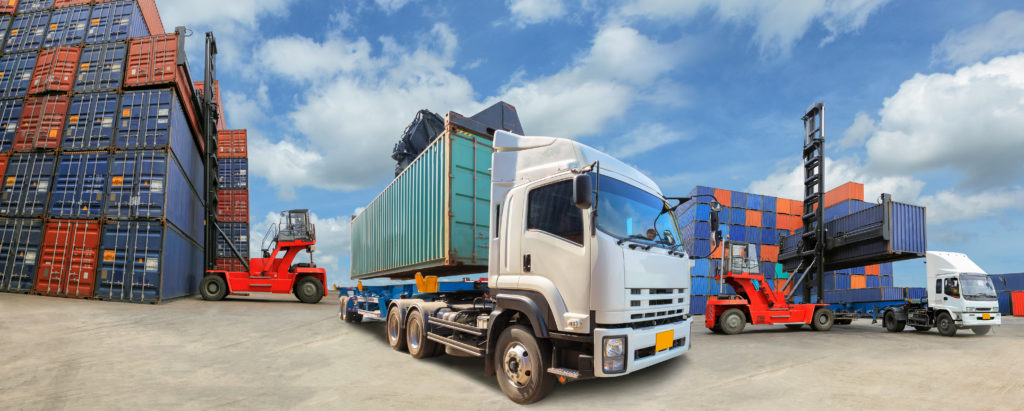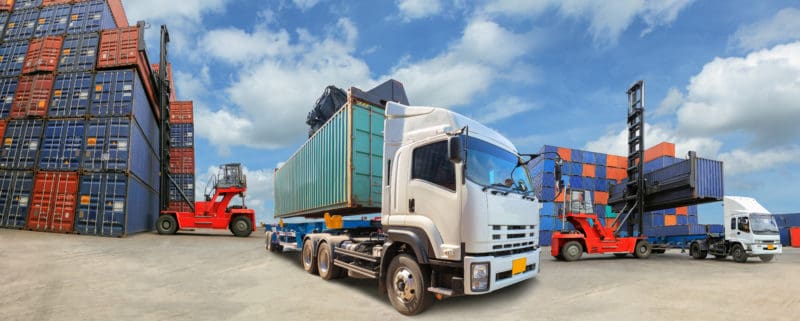 OSHA places the responsibility for communicating hazards with the entity that is responsible for the product – manufacturer, distributor or importer – essentially, whoever is identified on the SDS. The EPA then states that whoever generates the waste is responsible for its proper disposal. And the Department of Transportation is the presiding agency for the transportation of hazardous materials when in commerce within the United States – called dangerous goods internationally – and they, too, specify with whom responsibility lies for ensuring compliance with federal hazmat law.
OSHA places the responsibility for communicating hazards with the entity that is responsible for the product – manufacturer, distributor or importer – essentially, whoever is identified on the SDS. The EPA then states that whoever generates the waste is responsible for its proper disposal. And the Department of Transportation is the presiding agency for the transportation of hazardous materials when in commerce within the United States – called dangerous goods internationally – and they, too, specify with whom responsibility lies for ensuring compliance with federal hazmat law.
However, some terminology requires clarification because while the DOT will use the term ‘shipper,’ it doesn’t specifically define ‘shipper’ because of its broad meaning.
Defining an Offeror
The actual terms associated with the responsibility by definition is ‘offeror,’ though it is synonymous with the term ‘shipper’ as all offerors are, in fact, shippers. At first, this makes sense under the assumption that the manufacturer would also be the shipper of the product with responsibilities to ensure the shipment is compliant with the Hazardous Materials Regulations (HMR) – which is true if the manufacturer is shipping directly to the end user. However, it becomes confusing when there is more than just the manufacturer and end user where materials are shipped, such as when materials are received by a filler or distributor and then shipped again to another similar entity or end user.
The HMR provides that a person may offer a hazardous material for transportation once that person has classed and described the hazardous material, has determined the packaging or container used is authorized packaging and been manufactured, assembled, and marked in accordance with the applicable sections of the HMR. What it doesn’t specify, however, is the manufacturer or any similar entity – just the offeror – which generally leads to the question: What constitutes being an offeror?
The DOT defines ‘person’ as “ … an individual, corporation, company, association, firm, partnership, society, joint stock company; or a government, Indian Tribe, or authority of a government or Tribe, that offers a hazardous material for transportation in commerce, transports a hazardous material to support a commercial enterprise, or designs, manufactures, fabricates, inspects, marks, maintains, reconditions, repairs, or tests a package, container, or packaging component that is represented, marked, certified, or sold as qualified for use in transporting hazardous material in commerce.’ This definition, therefore, could include just about anyone or any entity, other than the Postal Service or a department, agency, or instrumentality of the government which is not covered by this term.
Further, the DOT defines offeror – or person who offers – as any person who performs, or is responsible for performing, any pre-transportation function required for transportation of the hazardous material in commerce and/or tenders or makes the hazardous material available to a carrier for transportation in commerce.
Shippers & Offerors
The first mistake many make is assuming the manufacturer – as the initial shipper – is responsible for the transportation of the material while it is in commerce. And while it’s true they have a responsibility, it’s only from when they begin any pre-transportation functions until it is delivered to the consignee. Once the consignee starts the pre-transportation functions, they become the shipper, which also applies to those the DOT identifies as a ‘reshipper.’
A ‘reshipper’ is a shipper that receives packaging from a previous offer and then offers it for transportation in the same packaging in which it was received without opening or altering the packaging. Nevertheless, the DOT specifically states that reshippers are independently responsible for ensuring each shipment offered for transport complies with federal hazardous materials law and may be independently subject to enforcement if it does not comply. The DOT does, however, acknowledge that reshippers may have reasonably relied on information from a previous offer but still retain a level of culpability affording the reshipper a discount up to 25 percent off any baseline penalties, which indicates that the reshipper maintains significant responsibility for what they offer for transport.
This then brings up an underlying question: When should someone rely on the information provided by a previous offeror, and how can someone know when they shouldn’t?
The HMR acknowledges that a shipment of hazardous materials may have more than one offeror and specifies that each person who offers a hazardous material for transportation in commerce must comply with all applicable requirements and is responsible for complying with any pre-transportation function that it performs or is required to perform. The HMR does state that ‘ … each offeror may rely on information provided by another offeror, unless that offeror knows or, a reasonable person, acting in the circumstances and exercising reasonable care, would have knowledge that the information provided by the other offeror is incorrect.”
And while many interpret that excerpt as exonerating those subsequent shippers beyond the manufacturer, arguing that only the manufacturer would reasonably have knowledge about their product and whether the information provided is or is not correct, the truth of the matter, however, is that the responsibility still remains largely on the most recent shipper or reshipper. The HMR requires all hazmat employees to receive a level of training that inherently turns each and every hazmat employee into a ‘ … reasonable person, acting in the circumstances and exercising reasonable care, [that] would have knowledge that the information provided by the other offeror is incorrect.’
The Role of Hazmat Employees
A hazmat employee is defined as any person who is employed on a full-time, part time, or temporary basis by a hazmat employer, or is self-employed, and who, in the course of that employment, directly affects hazardous materials transportation safety, including any individual who loads, unloads, handles or prepares hazardous materials for transportation; designs, manufactures, fabricates, inspects, marks, maintains, reconditions, repairs, or tests a package, container or packaging component that is represented, marked, certified, or sold as qualified for use in transporting hazardous material in commerce; is responsible for safety of transporting hazardous materials; or operates a vehicle used to transport hazardous materials.
Hazmat employees must be provided hazmat training by their employer consisting of general awareness training, function-specific training, safety training, and security awareness training.
The shipper being responsible for compliance of shipments they did not originally offer for transport is contingent upon on what is considered ‘reasonable knowledge’ from general awareness training requirements which state ‘ … that each hazmat employee shall be provided general awareness/familiarization training designed to provide familiarity with the requirements of this subchapter [The HMR], and to enable the employee to recognize and identify hazardous materials consistent with the hazard communication standards of this subchapter.’
The HMR requirement that hazmat employees be able to recognize and identify hazardous materials based on their comprehension of the HMR confirms that each hazmat employee is inherently a ‘reasonable person’ insomuch that under the circumstance of performing their employment functions, they have sufficient knowledge to know information is incorrect, or that the information is wrong, incomplete or missing altogether. Examples could include a package identified as containing alcohol but lacks any flammable identifiers or a corrosive disinfectant product that provides written warnings of it being sufficiently corrosive to cause burns but is packaged in sufficient quantities that would be known to require performance packaging.
The Domestic Commerce Clause
The DOT specifies that federal hazardous materials transportation law applies to the transportation of hazardous materials in commerce or as part of doing business. However, this doesn’t exonerate the consumer from being subject to federal hazardous material transportation law.
The United States Postal Service publishes its own hazardous materials regulations as part of the postal code, and while the baseline of the USPS hazmat code directly references following the HMR, they do impose extremely stringent limits as to what hazmat they will accept and how it must be offered.
When traveling by air, consumers are subject to HMR as supported by the notifications throughout airports referencing the HMR (49 CFR Parts 100-177). Further, other countries may or may not limit the reach of their Dangerous Goods Regulations (DGR) to commerce as is the case in Canada where anyone who transports dangerous goods for any reason is subject to the Canadian DGR.
Understanding one’s responsibilities with hazardous compliance is paramount in the continuing effort toward ensuring safety to employees, the workplace, and the environment. The next installment in this series will look at how hazardous chemicals, materials and substances can affect the very facility you work in.


